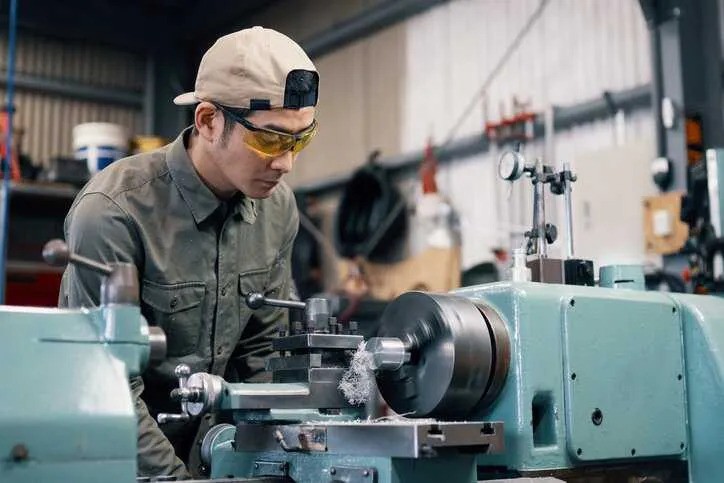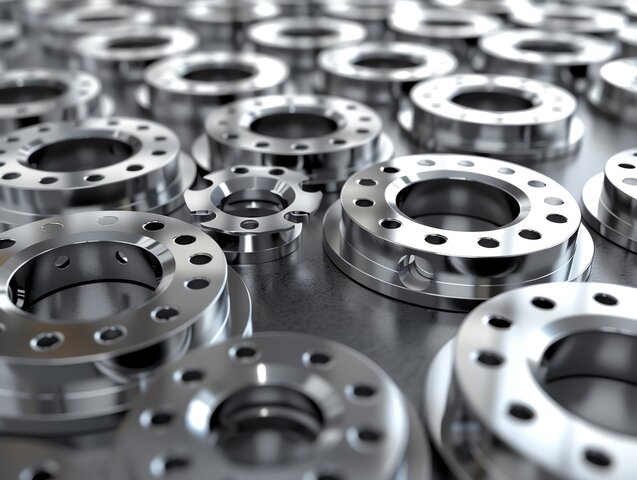Is your manufacturing strategy aligned with your business goals and market demands? In today's dynamic manufacturing landscape, companies face a critical decision between High-Mix Low-Volume (HMLV) and Low-Mix High-Volume (LMHV) production strategies. Each approach offers distinct advantages and challenges, significantly impacting everything from operational efficiency to market positioning.
Whether you're serving niche markets with customized products or targeting mass markets with standardized goods, understanding the nuances of these manufacturing models is crucial for business success. This article explores the key differences between HMLV and LMHV manufacturing, helping you make informed decisions for your production strategy.

2. High Mix Low Volume (HMLV)
2.1 What is HMLV
High Mix Low Volume (HMLV) manufacturing represents a production strategy that focuses on creating diverse product variants in smaller quantities. This approach emphasizes flexibility and customization over mass production, enabling manufacturers to meet specific customer requirements and serve niche markets effectively.
Key characteristics of HMLV manufacturing include:
Shorter production runs with limited quantities
Greater emphasis on product customization
Flexible manufacturing processes
Rapid adaptation to changing customer demands
Higher per-unit production costs
Enhanced quality control for individual products
Customization focus is central to HMLV manufacturing. This model allows companies to:
Tailor products to specific customer specifications
Implement design changes quickly
Respond to market feedback efficiently
Maintain high quality standards for each unique product
Offer personalized solutions to meet diverse customer needs
2.2 Examples and Applications
HMLV manufacturing finds application across various industries, with notable examples including:
Luxury and Artisanal Products:
Bespoke jewelry: Custom-designed pieces crafted to individual client specifications, incorporating unique gemstone combinations and personal design elements
Handcrafted furniture: Artisanal pieces created with specific dimensions, materials, and finishes to match customer preferences
Innovation and Development:
Prototype products: Initial versions of new products manufactured in small quantities for testing and validation before full-scale production
Limited edition goods: Exclusive items produced in restricted numbers to maintain uniqueness and value
Automotive and Industrial:
Custom automotive builds: Specialized vehicles modified or built to exact customer specifications, often for luxury or performance markets
Specialized industrial components: Custom-engineered parts designed for specific machinery or unique industrial applications
Medical and Healthcare:
Personalized medicine: Custom-formulated medications and treatments tailored to individual patient needs based on genetic profiles or specific health conditions
Specialized medical equipment: Custom-designed medical devices and instruments created for specific procedures or unique patient requirements

3. Low Mix High Volume (LMHV)
3.1 What is LMHV
Low Mix High Volume (LMHV) manufacturing represents a production strategy that emphasizes the mass production of standardized products in large quantities. This approach prioritizes efficiency and economies of scale, enabling manufacturers to minimize per-unit costs while maintaining consistent quality across extensive production runs.
Key characteristics of LMHV manufacturing include:
Long, sustained production runs
High-volume output of standardized products
Streamlined production processes
Lower per-unit production costs
Significant initial investment in equipment
Automated quality control systems
Limited product variation
Standardization focus is fundamental to LMHV manufacturing. This model enables companies to:
Achieve significant economies of scale
Maintain consistent product quality
Optimize production efficiency
Reduce production costs per unit
Serve mass markets effectively
3.2 Examples and Applications
LMHV manufacturing is prevalent across numerous industries, with prominent examples including:
Consumer Electronics:
Smartphones: Major manufacturers like Apple and Samsung produce millions of identical units annually, maintaining strict quality standards across massive production runs
Electronics components: Mass production of standardized parts such as resistors, capacitors, and integrated circuits for various electronic devices
Automotive and Transportation:
Consumer Goods:
Fast-moving consumer goods (FMCG): Mass production of everyday items like toiletries, cleaning products, and packaged foods
Clothing: Large-scale production of standardized garments for retail markets
Bottled beverages: Industrial-scale production of soft drinks, water, and other beverages for worldwide distribution
Industrial and Retail Products:
Plastic and paper bags: High-volume production of standardized packaging materials for retail and industrial use
Toys: Mass production of popular toy lines, especially during peak seasonal demands
4. Comparative Analysis of HMLV and LMHV
4.1 Production Scale and Flexibility
Scale Characteristics in HMLV:
Operates on smaller, more manageable production runs
Adaptable manufacturing processes
Quick changeover capabilities
Diverse product portfolio management
Responsive to market changes
Variable batch sizes based on demand
Scale Characteristics in LMHV:
Large-scale, continuous production runs
Optimized for maximum output efficiency
Fixed production lines
Limited product variation
Steady, predictable output levels
Consistent batch sizes
Flexibility Comparison:
HMLV offers superior adaptability for product customization and market demands
LMHV excels in stable, high-volume production but lacks quick adaptation capabilities
Trade-off between production efficiency and manufacturing flexibility
Different market responsiveness levels
4.2 Costs and Investments
Initial Setup Costs:
HMLV requires lower initial capital investment
Flexible equipment and tooling costs
Modular production line setup
LMHV demands significant upfront investment
Specialized equipment and automation systems
Comprehensive production line infrastructure
Production Cost Analysis:
HMLV typically has higher per-unit costs
More labor-intensive processes
Frequent setup changes
LMHV benefits from reduced per-unit costs
Automated processes reduce labor costs
Minimal setup changes required
Economic Considerations:
LMHV achieves significant economies of scale
Bulk material purchasing advantages
Optimized resource utilization
HMLV focuses on value-added pricing
Premium pricing for customization
Higher margins per unit despite higher costs
Profit Potential:
HMLV profits through customization premiums
Niche market positioning
Value-based pricing strategies
LMHV profits through volume and efficiency
Market share advantages
Cost leadership strategies
4.3 Quality Control and Customization
HMLV Quality Approach:
Intensive individual product inspection
Flexible quality control procedures
Real-time process adjustments
Focus on unique specifications
Higher involvement of skilled operators
Detailed documentation for each variant
LMHV Quality Methods:
Automated inspection systems
Statistical process control
Standardized quality parameters
Batch sampling techniques
Continuous monitoring systems
Uniform quality standards
Customization Capabilities:
HMLV excels in product customization
Individual customer specifications
Rapid design modifications
Unique feature implementation
LMHV limited to minor variations
Standardized options only
Mass customization where applicable

5. Automation Implementation
5.1 Automation in HMLV
Modularity Requirements: are essential in HMLV automation to accommodate diverse product variants. These systems must enable:
Configurable automation systems that can be quickly modified for different product specifications
Modular tooling and fixtures designed for rapid changeovers between product variants
Scalable automation solutions that can adjust to varying production volumes
Interchangeable production modules supporting different manufacturing processes
Flexible programming interfaces allowing quick recipe changes
Flexibility Needs: represent a critical aspect of HMLV automation, focusing on adaptability to changing production requirements through:
Adaptable robotic systems capable of handling multiple product variants
Quick-change end effectors for different manufacturing processes
Programmable automation controllers that can switch between different product recipes
Dynamic process adjustment capabilities to handle product variations
Multi-purpose equipment configuration supporting diverse manufacturing needs
Real-time production scheduling systems for optimal resource utilization
Quality Control Systems: in HMLV environments must be sophisticated enough to handle product variety while maintaining high standards:
Advanced vision inspection systems capable of recognizing multiple product variants
Adaptive quality monitoring tools that adjust to different specifications
Real-time defect detection across varied product lines
Automated documentation systems tracking multiple product parameters
Traceable quality parameters for each product variant
Intelligent feedback mechanisms for continuous process improvement
Setup Time Considerations: are crucial in HMLV automation to minimize production downtime:
Quick-change automation tools reducing changeover time between products
Automated setup procedures streamlining production transitions
Rapid tooling adjustment systems for different product specifications
Smart changeover protocols minimizing production delays
Minimal downtime strategies optimizing production efficiency
Efficient program switching capabilities between different product runs
5.2 Automation in LMHV
Streamlined Processes: form the backbone of LMHV automation, focusing on maximizing throughput:
High-speed automation systems optimized for continuous operation
Continuous flow production lines maintaining steady output
Optimized material handling reducing bottlenecks
Automated packaging systems for high-volume output
Integrated conveyor networks ensuring smooth material flow
Synchronized production cells maximizing efficiency
Consistency Requirements: are paramount in LMHV automation to maintain quality across large production volumes:
Precision control systems ensuring uniform product quality
Standardized process parameters maintaining consistency
Automated quality verification at high speeds
Uniform product handling procedures
Stable production conditions throughout the process
Repeatable process execution for consistent results
System Integration: in LMHV focuses on creating a cohesive production environment:
Seamless equipment connectivity across the production line
Integrated control systems monitoring all processes
Centralized monitoring platforms for comprehensive oversight
Data collection networks gathering production metrics
Automated material flow systems
Synchronized production scheduling maximizing efficiency
Predictability Factors: are essential in LMHV automation for maintaining stable production:
Stable production metrics ensuring consistent output
Reliable output forecasting for production planning
Consistent cycle times across production runs
Automated performance monitoring systems
Predictive maintenance systems preventing downtime
Statistical process control maintaining quality standards
While HMLV automation prioritizes flexibility and adaptability to handle product variety, LMHV automation focuses on consistency and efficiency for high-volume production. Understanding these differences is crucial for organizations planning to implement automation solutions in their manufacturing processes.
6. Strategic Considerations
6.1 Market Considerations
Target Market Analysis: plays a crucial role in determining the appropriate manufacturing strategy:
HMLV targets niche markets seeking customized solutions
LMHV focuses on mass markets requiring standardized products
Market size influences production strategy selection
Geographic distribution affects manufacturing location decisions
Competition levels impact manufacturing approach
Market maturity determines production flexibility needs
Demand Patterns: significantly influence the choice between HMLV and LMHV:
HMLV suits volatile or unpredictable demand patterns
Seasonal fluctuations require flexible production capabilities
LMHV works best with stable, predictable demand
Order frequency impacts production scheduling
Batch size requirements affect manufacturing setup
Market growth trends guide capacity planning
Customer Requirements: shape the manufacturing strategy decision:
Customization needs often dictate HMLV adoption
Standard product preferences favor LMHV implementation
Quality expectations influence process design
Delivery time requirements affect production planning
Price sensitivity impacts manufacturing cost structures
Service level expectations guide operational setup
6.2 Business Impact
Resource Allocation: requires careful consideration based on manufacturing strategy:
HMLV demands flexible resource deployment
Skilled workforce requirements differ between approaches
Equipment investment varies significantly
Technology infrastructure needs differ
Raw material management strategies vary
Working capital requirements differ between models
Operational Efficiency: varies between HMLV and LMHV approaches:
HMLV focuses on flexibility and customization efficiency
LMHV prioritizes throughput and scale efficiency
Process optimization strategies differ
Inventory management approaches vary
Quality control methods impact efficiency
Setup time considerations affect overall productivity
Market Positioning: is significantly influenced by manufacturing strategy:
HMLV enables premium market positioning
LMHV supports cost leadership strategies
Competitive advantage sources differ
Brand identity alignment varies
Customer relationship approaches differ
Value proposition development varies
Long-term Sustainability: considerations differ between strategies:
HMLV offers adaptability to market changes
LMHV provides economies of scale benefits
Environmental impact varies between approaches
Technology advancement adaptation differs
Market evolution response capabilities vary
Risk management strategies differ
Investment recovery periods vary
Future scalability options differ
Conclusion
Choosing between HMLV and LMHV manufacturing strategies ultimately depends on your unique business context, market demands, and long-term objectives. While HMLV offers the flexibility to serve niche markets with customized solutions, LMHV provides the efficiency and economies of scale needed for mass market success. The key is not just choosing a strategy, but implementing it effectively with appropriate automation and quality control systems.
Ready to optimize your manufacturing strategy? Start by evaluating your current market position, customer needs, and operational capabilities. Consider working with manufacturing consultants to assess which approach best suits your business goals. The future of your manufacturing success begins with making the right strategic choice today.
FAQs: HMLV vs LMHV Manufacturing
1. What is the main difference between HMLV and LMHV manufacturing?
Answer: HMLV focuses on producing a variety of products in smaller quantities with high customization, while LMHV concentrates on producing large volumes of standardized products with minimal variation.
2. Which manufacturing strategy is more cost-effective?
Answer: LMHV typically offers lower per-unit costs due to economies of scale, while HMLV has higher per-unit costs but can command premium prices through customization.
3. How do automation requirements differ between HMLV and LMHV?
Answer: HMLV requires flexible, modular automation systems that can quickly adapt to different products, while LMHV needs high-speed, streamlined automation focused on consistent, continuous production.
4. Which industries are best suited for HMLV manufacturing?
Answer: Industries requiring customization such as luxury goods, specialized medical equipment, custom furniture, and prototype development are ideal for HMLV manufacturing.
5. What are the quality control challenges in each approach?
Answer: HMLV requires detailed inspection of individual products and flexible quality control procedures, while LMHV focuses on statistical process control and automated inspection systems for large batches.
6. How does market demand influence the choice between HMLV and LMHV?
Answer: Choose HMLV for volatile or niche markets requiring customization, and LMHV for stable, mass markets demanding standardized products at competitive prices.
7. Which strategy requires more skilled labor?
Answer: HMLV typically requires more skilled labor due to the need for customization, frequent changeovers, and complex operations, while LMHV relies more on automated processes and requires fewer skilled operators.

















